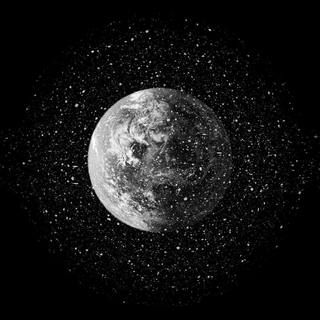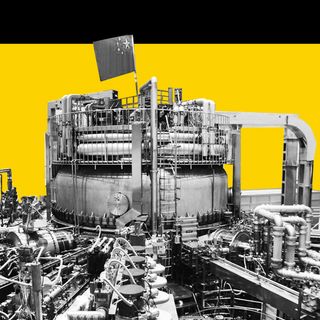The mystery around stars begins right from their birth. Scientists have long known the gestation period is quite long — measured in millions of years, if not more. But a new observation, using the world’s largest radio telescope, shows star formation may be happening 10 times faster than we previously expected.
This stellar discovery was published in the Naturejournal last week. If true, it could “upend” the theory of star formation. “If this is proven to be the case in other gas clouds, it will be revolutionary for the star formation community,” Paola Caselli from the Max Planck Institute for Extraterrestrial Physics, who was not involved with the research, told Science.
Astronomers in China used the Five-hundred-meter Aperture Spherical Telescope (FAST) to peer into a molecular cloud — a stellar nursery with gas and dust in which molecules can form, further aiding star formation — just 450-light-years away. The giant gas cloud, called Lynds 1544, is a fascinating part of the universe located in the Taurus constellation. Scientists think it appears at the cusp of producing a star, making it an intriguing observation zone.
The study of star birth shows what this formation looks like. Star births occur exclusively within molecular clouds. This is because these wispy gas clouds have low temperatures and high densities. These clouds with hydrogen gas come together with the force of gravity to form prestellar cores. Since the cores are highly dense and powerful, “they collapse and spark nuclear fusion, while magnetic forces hold the matter in place and slow down the process,” Science explained. The gas cloud is the starting point, which then evolves into a stellar embryo, but this process is generally thought to behugely unrushed. But both gravity and magnetic fields play a role in ushering the process.
The slow process was, however, not observed in Lynds 1544. In this particular prestellar core, hundreds of baby stars were observed to be forming at a pace 10 times faster than expected.
Scientists ascribe the significant difference in momentum to weak magnetic forces. The magnetic field between the densest part of the gas cloud — where the new stars are born — and the region around the cloud’s edges was 13 times weaker than scientists predicted. “If the standard theory worked, the magnetic field needs to be much stronger to resist a 100-fold increase in cloud density. That didn’t happen,” Di Li, the chief scientist of FAST who led the study,” said.
Related on The Swaddle:
Astronomers Map More Than 100,000 ‘Star Nurseries’ To Show Where Stars Are Born
“The detection of a reduced magnetic field in the prestellar core L1544 … may change our understanding of star formation,” the astronomers wrote in a statement. The observation shows magnetic fields have an important role in star births than previously thought.
The scrutiny on star births has focused on the outer layer (where magnetic fields dominate gravity) and the powerful core (which is 10,000 times denser than the outer layer). It is the region in the middle that offered a crucial piece of information, which only the FAST measurements could detect. FAST, built inside a natural basin in southwestern China, was able to trace a phenomenon called the Zeeman effect to a brilliantly lucid degree. It refers to a situation where gas clouds split in radio wavelengths due to the strength of the magnetic fields.
“The paper basically says that gravity wins in the cloud: That’s where stars start to form, not in the dense core,” Caselli said. “That’s a very big statement.”
The gravity of this claim is, in fact, significant. Scientists say if other gas clouds also show similar behavior (in terms of the magnetic field), it would mean the effects of gravity play a greater role than the cloud’s dense core. This would effectively revolutionize the theory of star formation. Arguably, observing star formation is difficult — because the dust and gas remain elusive and transparent to visible light. But using strong radio waves, like those gleaned by FAST, can help observe dark stellar nurseries.
With the visibility FAST offers, astronomers might be able to better examine the magnetic field strength around newly born stars. Patrick Hennebelle, a theoretical astrophysicist at the French Alternative Energies and Atomic Energy Commission, said: “it would help scientists better understand the initial conditions of planet formation.”




